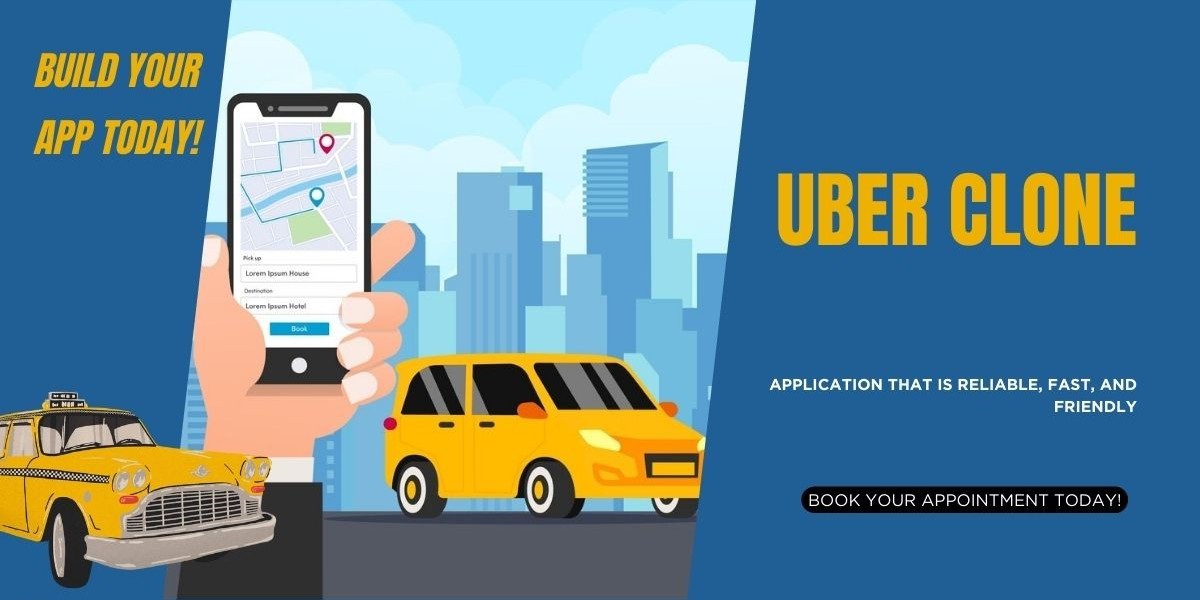The global ride-hailing market has crossed $200 billion, and that number’s only moving in one direction. What was once dominated by a few global players is now an open landscape for businesses ready to offer local, reliable, tech-driven transport solutions. At the center of this shift? The rise of the Uber clone is a customizable platform that enables companies to build and launch their own branded ride-hailing service without starting from scratch.
Whether you're a tech-savvy entrepreneur, a transportation service provider, or a logistics firm exploring growth avenues, tapping into a white label Uber clone could be your smartest strategic move this year.
What Is an Uber Clone App and Why Should You Care?
Let’s start with the basics. An Uber clone app is a prebuilt solution that mimics the core functionality of Uber: ride booking, real-time tracking, fare calculations, driver management, and admin control. But that’s just the foundation.
What makes it valuable is its adaptability.
A white label Uber app allows you to brand the platform as your own—design, features, pricing, language, and more. It’s a ready-made launchpad for any business looking to enter the ride-hailing or on-demand mobility space.
Instead of spending months (or years) and a six-figure budget building a ride-hailing platform from scratch, you can fast-track your launch with a white label Uber clone that’s already been tested, refined, and optimized.
Why Businesses Are Choosing Uber Clone Apps Over Custom Development
Building a product from the ground up has its place, but it’s not always the most innovative or most sustainable choice. Here’s why more businesses are choosing Uber clone solutions:
1. Speed to Market
Getting to market fast matters. A fully custom app might take a year or more to develop. With a taxi booking app development solution that’s prebuilt and white-labeled, you can be operational in weeks.
That’s not just a convenience, it’s a competitive edge.
2. Cost Efficiency
Custom development requires significant investment in design, architecture, QA, and infrastructure. An Uber clone app bypasses most of that, reducing initial costs by up to 70%.
That frees up budget for growth initiatives like driver acquisition, partnerships, and marketing.
3. Business-Proven Model
Uber’s success isn’t just technical—it’s behavioural. People already understand how these platforms work. That removes the friction of user education and lowers your customer acquisition cost.
By adapting a known model to your own market—with your branding, pricing, and service quality—you build trust faster and scale smarter.
4. Flexibility and Customization
Contrary to what the term "clone" might imply, you're not locked into a template. The best on demand app development companies offer deep customization: loyalty programs, subscription models, corporate accounts, fleet integrations, and more.
Who’s Using Uber Clone Platforms—and How They’re Making It Work
The idea of launching your own ride-hailing app may sound ambitious, but it’s more achievable than ever. Across industries, companies are already using Uber clone apps to generate real revenue and create value:
Transportation Service Providers
Taxi companies are shedding outdated dispatch systems and embracing white label Uber clone solutions to offer digital bookings, dynamic pricing, and automated driver management—all under their own brand.
Corporate Mobility Solutions
Companies managing workforce mobility are deploying Uber clone apps for employee transport, streamlining costs, improving safety, and simplifying logistics.
Logistics and Delivery Expansion
With slight modifications, ride-hailing infrastructure can power delivery services, especially in the last-mile segment. Some firms even use the platform to manage on-demand freight, courier delivery, or pharma logistics.
Municipal and Campus Transport
Universities, local governments, and industrial zones are customizing Uber clone platforms to run internal shuttle systems or subsidized transport networks—integrating real-time location tracking and access control.
What to Look for in an Uber Clone App
If you’re considering a move into the mobility space, your tech stack matters. A quality Uber clone app should come with:
Rider and driver apps (iOS and Android)
Real-time GPS tracking
Trip history and fare analytics
Wallet integration and multiple payment gateways
Multi-language and multi-currency support
Scalable backend infrastructure
Web-based admin panel for full control
The best on demand app development companies also provide post-launch support, technical maintenance, and the flexibility to scale your feature set as you grow.
Beyond Taxis: Expanding the Use Case
An Uber clone doesn’t have to be limited to passenger transport. The core functionality—matching supply with demand in real time—is versatile enough for multiple use cases:
Bike and scooter rentals
Boat and ferry bookings
Airport shuttle coordination
Non-emergency medical transport
Luxury chauffeur services
Corporate fleet sharing
The structure is solid. How you use it is entirely up to you.
Common Misconceptions About Uber Clones
Before moving forward, it's worth clearing up a few myths:
“Clone” means low quality.
Not true. The term "clone" refers to feature similarity, not code duplication or lack of originality. The top platforms are robust, secure, and built for scale.
You can’t innovate with a clone app.
Actually, starting with a prebuilt base gives you room to innovate faster. You skip foundational development and focus your resources on features that create differentiation.
Only startups use them.
Established businesses, including enterprise logistics and regional transit authorities, are now choosing white label Uber apps to expand operations without building from scratch.
Steps to Get Started With an Uber Clone App
If you're ready to explore launching your own Uber clone, here’s what the process typically looks like:
Define your business model.
Decide if you're targeting consumers, employees, logistics, etc.Select a development partner.
Look for a taxi booking app development company with real-world experience and a customizable product suite.Customize your solution.
Branding, pricing models, service types, and region-specific requirements—all tailored to your audience.Test and deploy.
Launch with a pilot, gather feedback, optimize, and scale.Continue improving.
Monitor usage patterns, iterate features, and enhance service quality over time.
Final Thoughts
The ride-hailing economy isn’t slowing down. It’s evolving toward niche players, localized solutions, and service providers that put users first.
If you're looking to enter or expand within the on-demand mobility space, a white label Uber clone offers the fastest, most cost-effective, and most scalable way to do it.
Whether you’re building a new venture or modernizing an existing operation, the tools are already here. What matters is how you use them how you create value for your audience, how you operate efficiently, and how you grow intentionally.







